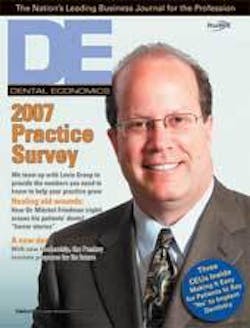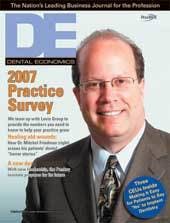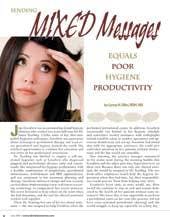In the RDH Family
AEDs In Dental Offices
Richard Lazar discusses the benefits of automated external defibrillators (AEDs) in the October issue of Dental Economics. He writes, “One emerging risk associated with the dental office is sudden cardiac arrest (SCA). SCA strikes approximately 350,000 Americans annually - about 1,000 victims per day or the equivalent of three full 747 aircrafts. It is a leading cause of adult death in the United States. Most people who experience SCA have not been identified as high risk, and approximately 20 percent of SCA victims have never been diagnosed with any type of heart disease. ... Predicting who, when, and where SCA will strike is virtually impossible. The vast majority of SCA events occur outside of hospital settings, and the overall SCA survival rate in the U.S. is estimated to be less than 5 percent. Survival rates for SCA victims can exceed 90 percent if defibrillation occurs in the first one to two minutes, but declines by about seven to 10 percent per minute for every minute thereafter.”
Sending Mixed Messages...
Lynne Slim, RDH, is the author of the Periodontal Therapy column in RDH. She recently wrote the article titled, “Sending mixed messages equals poor hygiene production,” in the October 2007 issue of Dental Economics. She wrote, “Can a dentist or employer recognize the difference between a chat-and-polish hygienist and a health-dedicated one? Sometimes the difference between the two is not obvious. Consequently, a lot depends on the employer’s interest and experiences in dental hygiene ... Patients today are not only looking to establish relationships with providers (dentists and dental hygienists), but they are also sophisticated enough to assess a clinician’s skills.”


